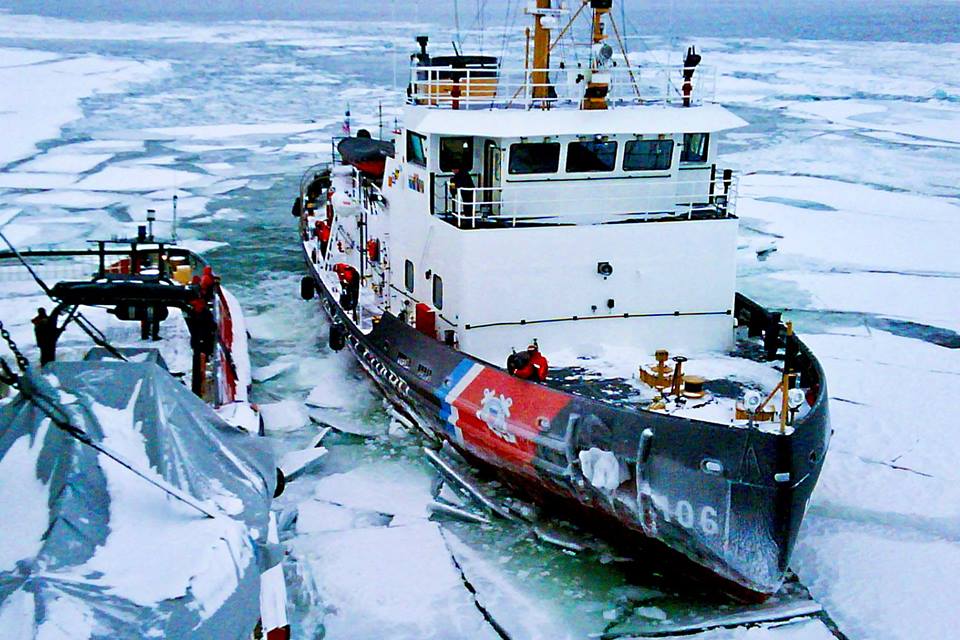By Kevin Byrne, AccuWeather.com Staff Writer
March 11,2015; 10:00PM,EDT
For the second consecutive winter, ice coverage on the Great Lakes is well above normal, with 73.7 percent of the Great Lakes basin covered in ice as of March 9.
While ice coverage is down overall compared to this time last season, three of the five lakes are still heavily covered, with Lake Erie at 91.3 percent, Lake Huron above 89 percent and Lake Superior 84.9 percent as of March 10, according to the National Oceanic and Atmospheric Administration's Great Lakes Environmental Research Laboratory.
 (Graph/NOAA)
(Graph/NOAA)The ice coverage could have an impact on the amount of severe weather this spring around the Great Lakes, according to AccuWeather.com Lead Long-Range Forecaster Paul Pastelok. The cooler waters will recover slowly, and lead to stability in the surrounding area, he added.
"Higher stability limits frequency and intensity of severe weather," Pastelok said.
Last year, it wasn't until June when the Great Lakes were finally free of ice, but Pastelok said he felt the percentages will be down by May and perhaps early June compared to last year.
The difference this year is the potential for milder air to sweep into western areas of the Great Lakes sometime in April, according to Pastelok. Plus, there will be some recovery, unlike last year, for a time here in March where temperatures increase and the ice coverage may melt off, especially across the western and southwestern lakes, he said.
"A faster recovery could mean a warmer summer for this region," Pastelok said.
 A satellite image shows decreasing Great Lakes ice on March 8. (Photo/NOAA Great Lakes Modis Imagery)
A satellite image shows decreasing Great Lakes ice on March 8. (Photo/NOAA Great Lakes Modis Imagery)Normally, maximum ice coverage is reached on the lower lakes, such as Lake Erie, between the middle and end of February, while early to mid-March is when maximum coverage occurs on the upper lakes, Leshkevich said.
"Usually at this time we start [to] see a decline in icecover," he said.
RELATED:
Video: Police Rescue Dog Trapped in Frozen River
PHOTOS: Springlike Warmth Dislodges Huge Ice Chunks From Boston Roofs, Obliterating Parked Cars Below
PHOTOS: Gigantic Ice 'Boulders' Litter Cape Cod Shoreline
Ice on the lakes can be severely detrimental to the shipping industry and can lead to delays in the spring shipping season. Although the mild conditions this week have helped reduce ice coverage, there is still plenty of time for winter to make its presence felt.
Last winter, the extraordinary amount of ice on the Great Lakes caused shipping to be brought to a "virtual standstill" according to a news release from the Lake Carriers Association (LCA). The LCA reported that the harsh conditions cost the economy more than $700 million and nearly 4,000 jobs.
"The cement trade on the lower Great Lakes often resumes about March 1 and iron ore shipments on Lake Michigan and Lake Erie start back up not long after that," LCA president James H.I. Weakley said in the release. "Demand for U.S.-flag cargos during periods of ice cover can approach 20 million tons."
"Even on the lower lakes it has been a rough winter on shipping," Leshkevich said. "The cold, the ice buildup ... it remains to be seen what happens with the warm temperatures we've been having, if they continue."
This past January, the U.S. Coast Guard in conjunction with the Canadian Coast Guard, initiated Operation Coal Shovel, a seasonal domestic ice-breaking operation to help keep waterways clear.
 The
Coast Guard Cutter Bristol Bay sits in the middle of Lake Erie as its
crew takes ice liberty during a short break from ice breaking duties as
part of Operation Coal Shovel, March 8, 2015. (Photo/U.S. Coast Guard
Chief Petty Officer Nick Gould)
The
Coast Guard Cutter Bristol Bay sits in the middle of Lake Erie as its
crew takes ice liberty during a short break from ice breaking duties as
part of Operation Coal Shovel, March 8, 2015. (Photo/U.S. Coast Guard
Chief Petty Officer Nick Gould)Icebreakers from both countries are utilized to prevent ice jams which can impede maritime traffic, according to a U.S. Coast Guard press release. The Great Lakes serve as primary thoroughfares for transportation of cargoes such as limestone, iron ore, coal, salt and cement. Weakley said several Great Lakes basin industries, such as steel-making and power generation, are now open almost year-round.
The shipping season on the Great Lakes runs 42 weeks a year with 12 of those weeks requiring icebreaking, according to the Coast Guard. Over that same stretch of time, more than 150 million tons of materials are delivered.
In February, the Arthur M. Anderson, a 767-foot freighter headed to Wisconsin, was rescued by the Canadian Coast Guard after it was stuck for five days in frozen Lake Erie, according to Cleveland.com. Ice on the lake was reportedly 1-2 feet thick in areas, with severe ice ridging, Leshkevich said. Some ice ridges reached 10 feet in height, he added.
The LCA has requested Congress to authorize construction of a second U.S. Coast Guard heavy icebreaker, which would to help with future ice-breaking operations. Currently the Coast Guard's Mackinaw is the only icebreaker assigned to the Great Lakes that can handle the harshest conditions.
Weather may be warming up, but #USCG crews are still #icebreaking to keep critical waterways open!


No comments:
Post a Comment